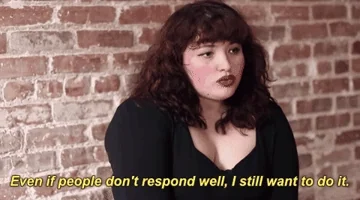**Warning** This is a long one… but readers have been asking for it… Be careful what you wish for ????
“My play had a great world premiere, and now I can’t get a second production, because it’s been produced already.”
I hear this a lot, and I address some of the problem in The Myth of World Premiere-itis. If you don’t feel like going back to read that (though you should haha), here are the most salient points:

The idea that theaters separate plays into “produced” and “unproduced” piles is unfounded.
**The vast majority of plays being produced have been produced before—often many (many) times. If you need verification, look around your own town, or the listings in American Theatre, or publications catalogs–nearly all adult plays require production before publication.
**If a theatermaker wants to produce your play, they will produce it whether it’s been previously produced or not. Why? Because it’s a good play that they have fallen in love with and they think their audiences will, too.
**For any available season production spot, your play is competing not just with unproduced plays, but with every existing play by every playwright on the planet, living and dead. Consider those odds. You are not just fighting for a second production; you are fighting for a production, period.
So why was it so easy—by comparison, at least—to get the first production?
First productions are easier to get not because the script is unproduced per se, but because being unproduced usually puts your script in a smaller pool. Your odds are better in a smaller pool, which is why it is always your goal to be in one, at any point in a play’s life. (Read The Real Inspiration for Playwrights Project #RIPP for strategies on that.)
Let’s backtrack to that great world premiere. What were the circumstances surrounding it? Primarily, was the production assisted by significantly reduced competition that resulted in a smaller pool? Was it a local theater or one you have a connection with? A demographically or geographically specific competition? An invitation for plays on specific topics? Unproduced plays only? Or, best of all, one of those other restrictions PLUS an unproduced requirement?

Any of these made it easier to get that world premiere, because you had less competition. Maybe you even produced it yourself, and there was no competition at all.
Unfortunately, once those small-pool opportunities are no longer options, you’re in the hugest pool there is—the one that contains every script ever written. This logically means you’re going to have to swim a lot harder to be noticed: more hustle, more submissions, more networking, more research, more everything. Because second-production difficulty has everything to do with that larger pool and nothing to do with your play having already been produced. And if you’re saying, “But…” remember again that the overwhelming majority of produced plays have been produced before. That’s indisputable.

Success in getting a second production hinges on how competitive your script is in that larger pool. Which means you need to ask yourself, “When theaters have just two to six slots to fill and literally thousands upon thousands of plays to choose from, what might compel them to fill one with my play?” Hard truth: not every play will make the cut. In fact, most won’t. When they don’t, one thing is certain: it is not because it’s been previously produced.
Here are some factors and issues that do factor into finding subsequent productions.
BUZZ: You had sell-outs every night, but who knows that? Did you get reviews? And, if so, who’s read them? Were people talking about it online? Chances are, unless you’re a well-known playwright, or were produced to critical acclaim in a large city, that “great” world premiere has gone largely unnoticed. Which means now you’re in a competitive pool of known plays with one that still isn’t—and with no more small-pool options to send it to. In this post, Adam Szymkowicz talks about a lot about why the “where” of a world premiere matters–mostly as it pertains to the ability to secure publication–so I won’t repeat him, but will note that while the “where” can help, we don’t always have the luxury of choosing, and seeing the play produced is always the best next developmental step—as well as one that doesn’t preclude a second production.

THE PLAY ITSELF: Take note of any feedback you’ve gotten about the play and ruthlessly assess whether or not this play is as good as it can be. Ask others to assess it. Ask theater professionals for brutal honesty about what might make it marketable—or why it’s not. Hire a dramaturg. Rewrite. Hard truth: being the best of just hundreds of plays in a certain competition is no longer good enough. This play is going up against a literal world of stiff competition now. It needs to be ready.
GETTING IT READ: This is where networking is critical. Because yes, while there are thousands upon thousands of plays in the world, artistic directors and literary managers can’t possibly see and read them all. (The good news is they don’t even want to, which automatically makes the pool smaller.) This is why they cull reading lists from proven entities, plays that critics they like recommended, that have good production pedigrees, or that were brought to them by people on their staff—or even actor and director friends keen to be involved with a particular play. Which means to get yourself in that mix; you have to entice someone to read your play, the one they’ve never heard of. And the only way to do that is networking and follow-up. I very recently wrote an entire post about that; you can read it here, and it can’t be stressed enough. Your play that nobody has heard of has a slim chance of being read without your help. Lots of it.
EXISTING CONNECTIONS: You’ve probably noticed that certain playwrights tend to be produced at the same theaters over and over. If a theater has had success with one of your plays—and they liked working with you—there might be opportunity to repeat that formula. Steve Yockey is a regular at Stray Cat in Phoenix, Rajiv Joseph at Alley in Houston. Always go back to the people you’ve proved yourself with before, and see if they have interest in this play, or can recommend someone who might (even better: they’re willing to be the recommender). The successes I’ve had this way started with ten-minute plays! (So if you’re not writing ten-minute plays, here’s why you should.)

THE HOOK: I have no hard data on this, but, in surveying my own catalog, and which plays have gotten second (and third or fourth) productions and which have not, I’ve come to believe that plays by unknown playwrights that get second productions have hooks that set them apart. They are first and foremost tight and well-written. They grab immediately, so that readers keep reading. But beyond that, they present something that the reader has not seen before.
I think the endings of both THE WAY IT IS and FLOWERS IN THE DESERT surprise readers. THE COUPLE NEXT DOOR is about swingers, and I don’t know of another play that is except Bruce Norris’s THE QUALMS, and mine was first (and, while I haven’t seen his, it sounds like a different take). SAFE offered outreach opportunity to the theater that did its second production, and that was important to them. What does your play offer? What makes it stand out? How does it hit the sweet spot for a given theater in a way that no other play does?

I have other plays—more critically acclaimed, more decorated, more thoughtful, better, perhaps—that have not gotten second productions (and some not even first). Are they too risky? Too specific? Suggest too many obstacles? I don’t know why, but they’re not screaming “produce me!” the way the previously mentioned plays obviously do. And for second productions, that scream is critical. Stephen McKinley Henderson says that you only need one hit, and then everybody wants the back catalog; my unproduced or one-and-done plays may see the light of day in that unlikely event, but, for now, they sit. Even the most famous playwrights have plays that faded away. None of us wants to hear that, after toiling so hard to get the first production, but it’s the way it works.
SUBJECT MATTER: Lots of plays—like the ones I alluded to in the previous paragraph—end up in the festival circuit, get tons of readings, awards, etc., and don’t find life in theaters. There is a seeming disconnect between what is popular for awards and festivals, and what actually gets produced again and again. If you look at plays that did emerge from that arena to ongoing life—things like I & YOU and THE WOLVES—you’ll see that they’re not edgy or topical per se, just unusual and well-written. (I & YOU is also a two-hander for high-schoolers, which didn’t hurt. THE WOLVES, which features a large cast of young girls, will likely have a strong life in colleges. See PRODUCIBILITY below.) My most produced play has never won a damned thing, while my Kilroys play and O’Neill finalist remain unproduced. I’m not saying write to that middle, but once a play is written, consider where it falls on the spectrum, and how that could be affecting its chances of future production. Also consider what theaters you’re pitching to, and what kind of match you’re looking to make.
PRODUCIBILITY: Once you manage to get your play read and loved, easy producibility can seal the deal. Yes, we’re told to write what we want, but hard truth: risk goes down easier when it doesn’t cost as much. The two plays I mentioned above, FLOWERS IN THE DESERT and THE WAY IT IS? Both two-handers with super easy set and technical requirements. THE COUPLE NEXT DOOR is a four-hander on a unit set. Think about THE SUBMISSION, which required a cast of four and next to no set or tech requirements. That play was produced everywhere. We don’t want it to matter, but it does. OSLO won the Tony, but how many theaters are lining up to produce a cast of 14? (This season’s JUNK at Lincoln Center has 23!) Theaters have budgets, often tight ones. We can have grand dreams, but theaters don’t often have grand budgets to match. Ask any artistic director what’s on her “I love it, but…” list.

COLD SUBMISSION: I have actually secured several—most?—of my subsequent productions this way. In the aforementioned Adam Szymkowicz link, Adam also talks a lot about how to find theaters that might be interested in your play; that kind of targeted cold submission can and does work, but it is labor intensive, and also contingent on the previously discussed, THE HOOK. Also, these are likely to be smaller theaters, not LORTs. If you’ve got your sights set on LORTS, I will say that’s not a likely scenario for an unknown play/playwright.
Contrary to popular mythology, many calls do accept previously produced plays. Don’t be shy or snobby about sending to these! If you’ve already had a world premiere, you have absolutely nothing to lose by having it produced anywhere else; it can only help it gain exposure. And contrary to the whole world-premiere mania, multiple productions of a play give it validity. One theater producing a play can be written off as anything from a favor to an obligation, but three, four, five? There must be something to this piece!

PUBLISHED OR NOT?: A quick word on this. Publication can often lead to subsequent–as opposed to second–productions, if the play was ready for publication, which often means people have heard about it (see: BUZZ), but it’s probably less likely that it leads to second productions. Even in a case where a play has a buzz-worthy premiere in a major venue, second productions are often lined up as a result of the buzz, even before the play is published. And, whenever a play is published–given the number of titles it’s still competing with–all of the aforementioned still holds true in terms of what will make theaters choose it, especially for an unknown play. There’s also one other thing to consider: smaller theaters that can’t pay traditional royalties will not choose it, so rushing to publication isn’t always the best strategy when seeking the second production.
If you’ve ever lost weight, you know that nobody wants to hear you did it with diet and exercise; they want the magic bullet answer. Playwrights looking for second productions aren’t much different, which makes it easy for them to fall into the fallacy that it’s the first production that’s making it so hard. I wish there were a magic bullet, but, just like losing weight, getting second productions takes hard work. More than that, it takes the foundation that can help hard work bear fruit. The answer is no different than any other question in this industry: keep writing, keep submitting, keep talking to people. The connections, relationships, and opportunities are there, but when the doors open, you need a strong, unique, and probably easy-to-produce, play to get you through. And who knows? Once relationships—and yes, box office success—are established, maybe that the larger cast, more ambitious, more technical play will see its day.
Please follow me on Twitter @donnahoke or like me on Facebook at Donna Hoke, Playwright.
Playwrights, remember to explore the Real Inspiration For Playwrights Project, a 52-post series of wonderful advice from Literary Managers and Artistic Directors on getting your plays produced. Click RIPP at the upper right.
To read #PLONY (Playwrights Living Outside New York) interviews, click here or #PLONY in the category listing at upper right.
To read the #365gratefulplaywright series, click here or the category listing at upper right.
An honest, hard-nosed, and well-written column. Thanks, Donna!
I guess I’m reading this late, but it’s a valuable post, Donna–a great reality check for those of us who study carefully what kinds of plays a theatre produces and think our submissions should fit right in. Thank you for it.
All still true!